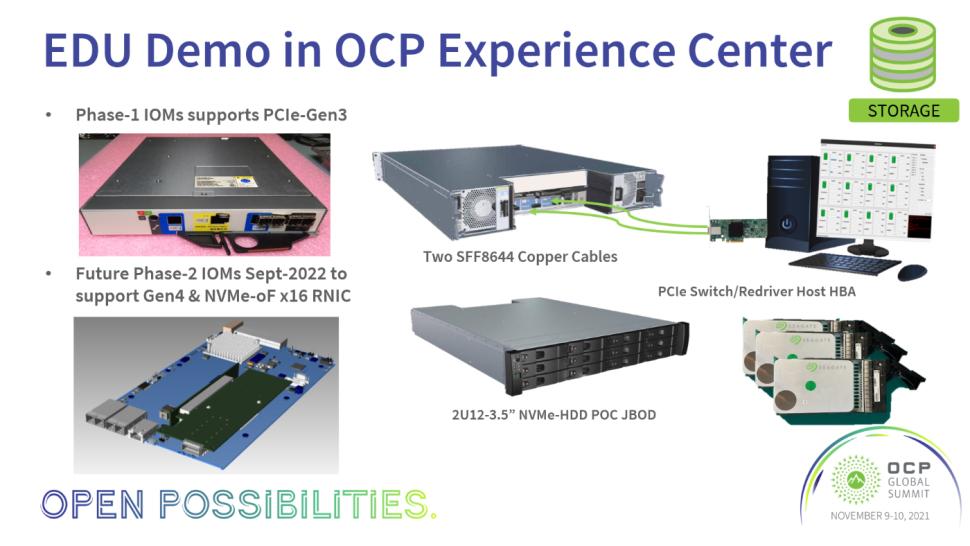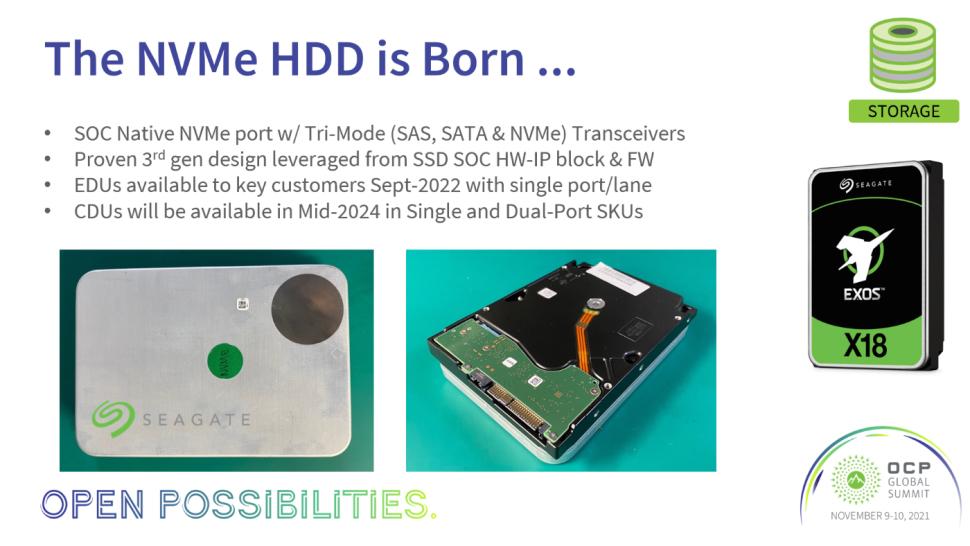Seagate has demonstrated a hard disk drive connected that will host a PCIe interface. Like solid-state drives, the experimental hard drive uses the NVMe protocol to operate alongside SSDs seamlessly. Usage of a single protocol for different types of storage devices will greatly simplify datacenters.
The experimental SSD is based on Seagate's proprietary controller that supports all three major protocols, including SAS, SATA, and NVMe over a 'native NVMe port,' and does not require any bridges. The HDD was demonstrated in a proof-of-concept 2U JBOD enclosure that used a relatively simple PCIe switch connecting to 12 3.5-inch drives using a PCIe interface. Modern HDDs can barely saturate even a single PCIe 2.0 link, but future multi-actuator HDDs promise to be much faster, so 6 Gbps provided by SATA or 12 Gbps offered by SAS might not be enough at some point. To that end, the industry has to think about future interfaces to connect hard drives, and PCIe seems like a natural choice. Furthermore, as SSDs are gaining traction in datacenters, the NVMe protocol becomes pervasive, so it makes sense to adopt it for HDDs. This is why NVMe 2.0 adds hard drive support.
To put Seagate's PCIe/NVMe HDD plans into the context of the company's roadmap, expect the first commercial hard drives with a PCIe interconnection to use the company's heat-assisted magnetic recording technology, utilize one or two actuators, and feature a capacity between 30TB and 40TB.
Seagate Working on Mechanical HDDs that are PCIe base



